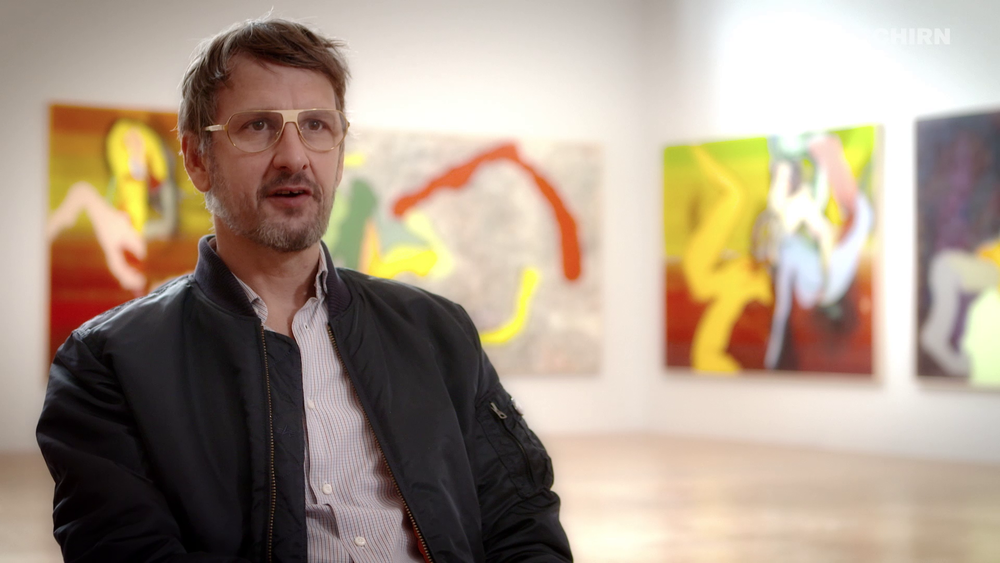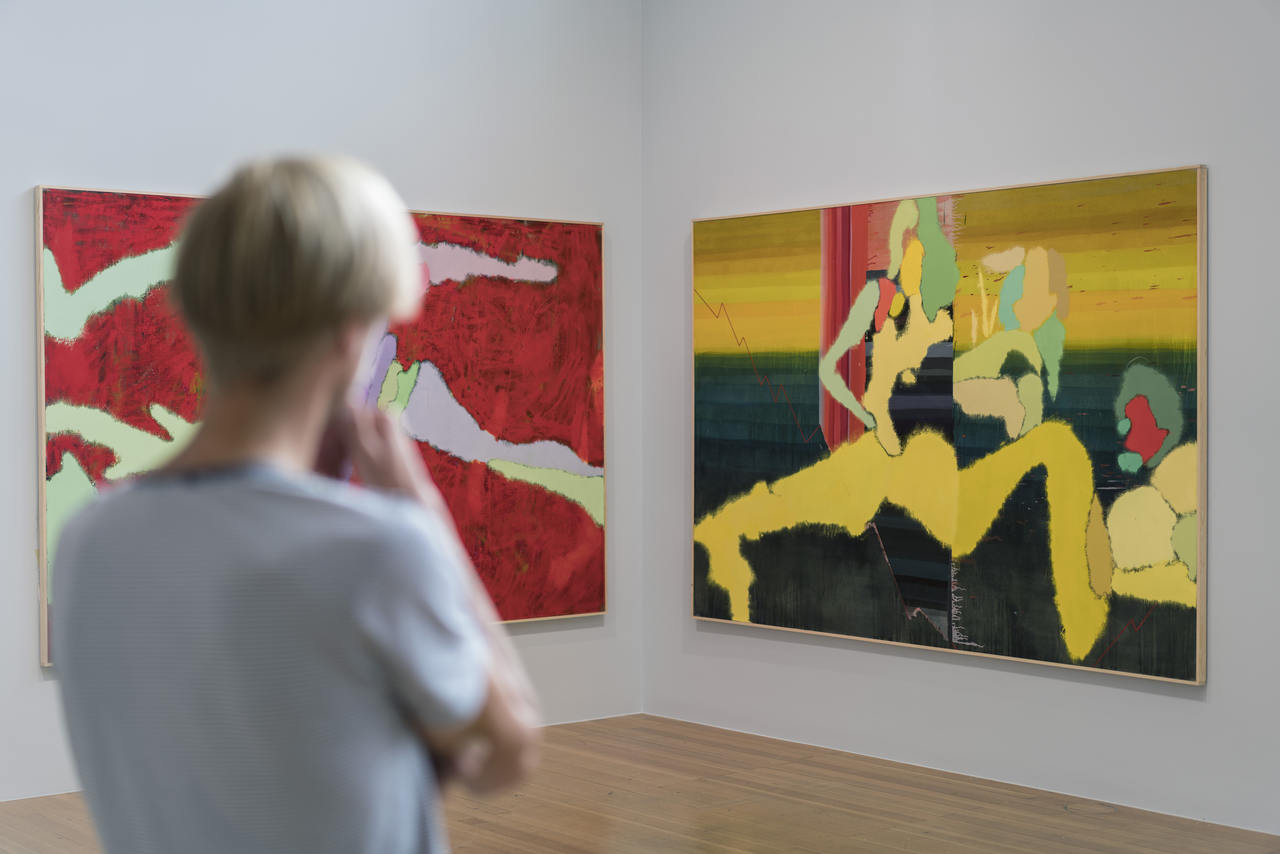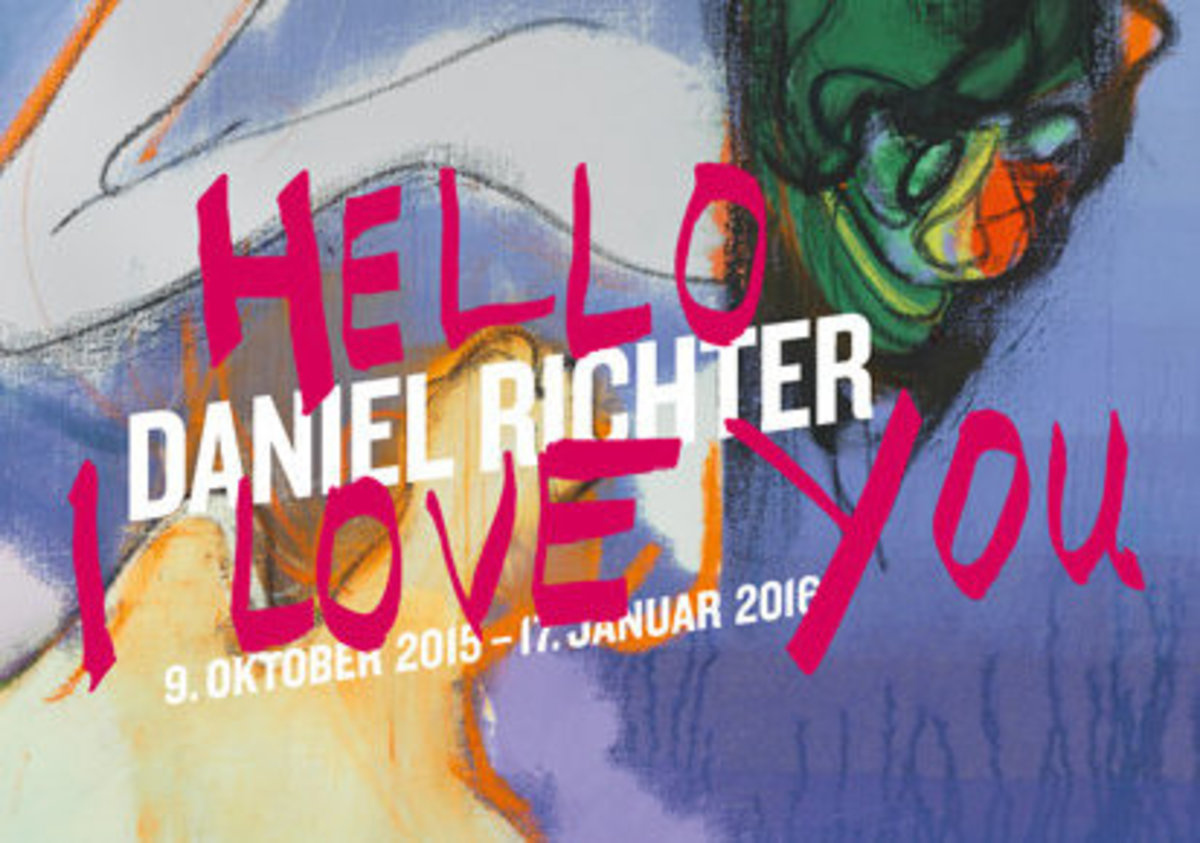Artist Daniel Richter likes to use metaphors from the kitchen – SCHIRN MAGAZIN explains why he has prepared his new series of pictures at the SCHIRN based on the recipe for Russian soup, of all things.
Daniel Richter obviously has the makings of a chef. He often uses culinary vocabulary when talking about his paintings. Sometimes he even seems to prefer talking about food rather than his work. Preferably over pralines, he says; the enjoyment factor is higher. In any case his new paintings are no longer elaborate affairs of several courses, he claims, but more like a kind of borscht. With dill. But we’ll get to that later. This definitely puts an end to the discussion, which has by now become somewhat bland, about the essence of art: art comes from cooking. You are cordially invited to this feast for the eyes at the Schirn. Hot borscht is available daily from Tuesday to Sunday, Monday: closed.
Richter’s cookery studio
In Daniel Richter’s cookery studio, haute cuisine features on the menu just as much as Russian peasant cooking. The studio is large, practical and functional and the chef de cuisine pays attention to the correct blend of order and an environment full of inspiring ingredients. Incidentally, he terms the latter nourishment (see exhibition catalog). In various pots, the paints wait to be stirred and mixed. Secret recipes and tried-and-tested combinations are concocted. The artist cites great cooks of the past, stewing over and turning their ideas and pouring them into new creations. Top-caliber fusion cuisine. The challenge is getting the blend of ingredients right. Yet it is not just the ingredients, but also the cooking time that plays a key role. Some dishes just need a brief simmer, others must infuse over several days or even be hung for a very long time before they develop their particular aroma and can be turned into something else.
Richter works alone in his studio and does not employ any assistants. Not because too many cooks spoil the broth, as he says, but because he finds it depressing when listless kitchen hands limply stir up dishes they are not particularly interested in. Yet Richter is never really lonely; he shares his studio with two cats and all manner of renowned musicians in the form of a large record collection. Sometimes the one-man cookery show is also graced with visitors. They may be culinary-savvy collectors looking to purchase one of the exquisite picture-dishes, or curators such as Katharina Dohm, in preparation for the feast at the Schirn. They are all curious, sometimes also critical. Richter is visibly calm as he takes it in; he likes people taking a look at his concoctions and is by no means camera-shy in his place of work.
The thing with the dill
Chewing the fat with Katharina Dohm in preparation for the show, Richter explains that his earlier, figurative pictures were a kind of seven-course meal, while his new paintings are more of a borscht. “Meaning, that the whole thing cooks for six hours and then you add the dill, at the end. If the dill is added too early everything just tastes bland. (...) And if you accidentally grab the coriander instead of the dill, it’ll all be ruined.” Dear painters and those aspiring to the profession, a note from the master chef: Don’t mess with the dill! Make sure you don’t add it too early and certainly don’t mix it up with coriander, otherwise disaster will loom! The question must remain open as to how these instructions are to be followed in individual cases.
So, borscht, a meat dish. Sorry veggies, yes, there is just the one course, and no, no sides. Yet Richter originally had something else in mind, ultimate fusion so to speak. Then came the sobering realization: “It initially sounds good to say that I combine vegetarian cuisine and meat dishes. But the resulting problems come to light in practice.” Obviously nutty as a fruitcake, that idea. Fortunately even the most die-hard vegetarians are usually not averse to carnal desire, which is why Richter spices up his version of borscht with eroticized subjects, visually tickling a few taste buds in the process. And, incidentally, perhaps the vegetarians will find a measure of consolation in the fact that at least one of the two studio cats is called Tofu. Richter is evidently not just a cook, but also knows how karma works.
A feast for the eyes
Dinner is served: Hello, I love you! Richter plates up a first-class borscht at the SCHIRN, Mamma Russia would be proud. The cooking time of around two years has produced 22 creations, served in large portions in plain pots filled to the very edge. These are in turn arranged on a lily-white background, by themselves, with no unnecessary table decorations. The daylight in the dining room really puts the dishes in the limelight. The guests file past, the chef opens the buffet. Bon appétit!
Now it is the observers’ turn to show appreciation. How does the soup taste? Ideally the best way to one’s heart is through the stomach and the verdict is: pure love. For the artist-chef this moment marks the conclusion to a work phase lasting several years. “Yet this conclusion simply means that the stuff is now lying there like vegetables, and now I need to start preparing the next soup with these vegetables.” So while Richter retreats to his studio-kitchen, the audience can take a breather to digest. Alternatively, second helpings are on offer at the Schirn until January 17 for all those who haven’t yet seen their fill.
PS: With all these vegetables on the table, chances are that the next dish will be vegetable curry. The vegetarians would be all smiles and in the end the coriander would get used after all.


Join the joyride – painting and music in the works of Daniel Richter
Can you translate music into painting and vice versa? Many artists, from Toulouse-Lautrec to Matisse to Yves Klein, have tried to do just that.

HEATHER PHILLIPSON. EAT HERE
British artist Heather Phillipson transposes the SCHIRN's Rotunda into a surreal digital-physical chamber

DANIEL RICHTER. HELLO, I LOVE YOU
Unusual, radical, confrontational: Daniel Richter's latest works break with the familiar – the SCHIRN presents them to the public for the first time